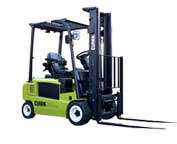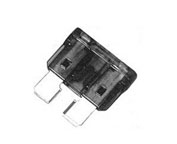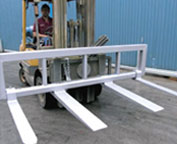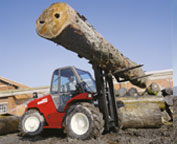
Forklift Brakes - A brake in which the friction is provided by a set of brake pads or brake shoes which press against a rotating drum unit referred to as a brake drum. There are several specific differences among brake drum kinds. A "brake drum" is normally the explanation given when shoes press on the interior surface of the drum. A "clasp brake" is the term utilized so as to describe whenever shoes press against the outside of the drum. Another type of brake, known as a "band brake" utilizes a flexible belt or band to wrap all-around the outside of the drum. Where the drum is pinched in between two shoes, it could be referred to as a "pinch brake drum." Similar to a typical disc brake, these kinds of brakes are quite rare.
Prior to 1955, old brake drums required constant modification periodically to be able to compensate for drum and shoe wear. "Low pedal" or long brake pedal travel is the dangerous outcome if adjustments are not executed satisfactorily. The motor vehicle can become dangerous and the brakes can become ineffective whenever low pedal is combined with brake fade.
There are different Self Adjusting Brake Systems presented, and they could be categorized within two main types, RAI and RAD. RAI systems have inbuilt tools which avoid the systems to recover if the brake is overheating. The most recognized RAI makers are Bosch, AP, Bendix and Lucas. The most well-known RAD systems include Bendix, Ford recovery systems, Volkswagen, VAG and AP.
The self adjusting brake will typically just engage whenever the lift truck is reversing into a stop. This method of stopping is acceptable for use where all wheels use brake drums. Disc brakes are used on the front wheels of vehicles nowadays. By working only in reverse it is less probable that the brakes will be applied while hot and the brake drums are expanded. If tweaked while hot, "dragging brakes" could take place, which increases fuel consumption and accelerates wear. A ratchet mechanism that becomes engaged as the hand brake is set is one more way the self adjusting brakes could function. This means is just suitable in functions where rear brake drums are used. When the parking or emergency brake actuator lever goes beyond a certain amount of travel, the ratchet developments an adjuster screw and the brake shoes move in the direction of the drum.
There is a manual adjustment knob placed at the bottom of the drum. It is usually adjusted via a hole on the other side of the wheel and this involves going underneath the lift truck with a flathead screwdriver. It is of utmost significance to move the click wheel properly and tweak each and every wheel equally. If unequal adjustment takes place, the vehicle could pull to one side during heavy braking. The most effective way so as to make certain this tedious job is accomplished safely is to either raise each wheel off the ground and hand spin it while measuring how much force it takes and feeling if the shoes are dragging, or give every\each and every one the same amount of manual clicks and then do a road test.
![]() Click to Download the pdf
Click to Download the pdf
Forklift Parts







Lift Parts Express
TOLL FREE: 1-888-695-7994
Boise City, Idaho
forkliftpartsboisecity.com
Email Us
About Us



